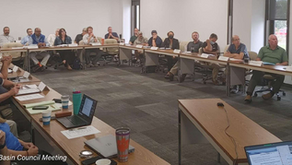Are You Using These Key Approaches for Improving Preventative Maintenance?
- JD Solomon
- Mar 5
- 3 min read

Preventative maintenance (PM) is a proactive approach to maintaining equipment and infrastructure designed to prevent failures, ensure reliability, and optimize operational efficiency. Rather than waiting for equipment failures, PM involves scheduled inspections, component replacements, and systematic overhauls. This strategy reduces unplanned downtime, extends asset life, and ensures regulatory compliance.
Understanding Preventative Maintenance
PM involves routine tasks such as replacing filters and lubricants, changing belts, and greasing components. The goal is to detect and address potential failures before they escalate. This approach contrasts with reactive maintenance, which focuses on repairs after breakdowns. Implementing PM enhances productivity and minimizes disruptions.
Objectives of Preventative Maintenance
The primary objectives of preventative maintenance include:
Preventing Failures: Regular inspections identify wear and tear, allowing timely interventions.
Ensuring Compliance: Many industries require PM to meet safety and regulatory standards.
Optimizing Resource Allocation: PM ensures efficient scheduling, reducing unexpected workload spikes.
Extending Equipment Life: Addressing minor issues early helps assets function optimally.
Improving Safety: Reducing the risk of malfunctions enhances workplace safety.
Balancing Preventative and Planned Maintenance
A crucial consideration in maintenance management is determining the appropriate balance between preventative maintenance and other planned work. Ideally, 80% of maintenance activities should be planned, with preventative maintenance constituting 30% of the total workload. Planned maintenance encompasses proactive measures such as condition monitoring, predictive maintenance (PdM), and corrective maintenance (CM). Predictive maintenance leverages data analytics and sensor technology to anticipate failures, while corrective maintenance addresses known issues before they escalate.
Corrective Maintenance in PM
Corrective maintenance (CM) is often performed alongside preventative maintenance to address minor issues discovered during inspections. However, integrating CM into PM schedules requires careful planning. Key considerations include:
Work History Preservation: When CM tasks are integrated into PM work, tracking and documentation are essential to maintain accurate records.
Managing Break-in Work: Excessive CM during PM inspections can disrupt schedules. To prevent excessive delays, 30 minutes of CM per PM task is recommended as a guideline.
Minimizing Work Order Overload: While addressing minor corrective tasks within PM schedules may be convenient, significant repairs should be assigned separate work orders to ensure accountability and proper resource allocation.
Who Should Perform Preventative Maintenance?
Effective PM requires contributions from:
Maintenance Staff: Skilled technicians handle complex maintenance tasks.
Third-Party Vendors: External specialists manage highly technical maintenance.
Operator-Based Maintenance: Operators perform routine tasks like cleaning and lubrication, enabling early issue detection.
To track history and optimize scheduling, all PM activities should be recorded in a Computerized Maintenance Management System (CMMS).
Work Leveling and Resource Allocation
A common challenge in preventative maintenance is ensuring that resources are allocated efficiently. Work leveling involves adjusting PM schedules based on equipment criticality and resource availability. Three key strategies are provided.
Adjusting Frequency
Not all equipment requires the same level of maintenance. Critical assets should receive more frequent attention, while less critical equipment can have extended maintenance intervals.
Summing Hours by Month
Analyzing the total PM hours required helps in resource planning and balancing workload.
Recognizing Resource Constraints
Most organizations operate with limited maintenance personnel. Prioritizing high-impact PM tasks ensures that available resources are utilized effectively.
The Importance of a Structured PM Program
To maximize the benefits of preventative maintenance, organizations should establish a structured PM program with these components.
Asset Inventory and Criticality Assessment
Identify and prioritize all assets based on operational importance and failure risk.
Standardized PM Procedures
Develop consistent maintenance checklists and procedures tailored to each asset type.
CMMS Utilization
Implement a CMMS to track maintenance schedules, document work history, and generate data-driven insights.
Training and Skill Development
Ensure maintenance personnel and equipment operators receive adequate training on PM best practices.
Continuous Improvement
Regularly review PM effectiveness and make necessary adjustments based on equipment performance data and failure trends.
Getting Preventative Maintenance to the Next Level
Preventative maintenance reduces downtime, extends equipment lifespan, and ensures regulatory compliance. Organizations can optimize operations and enhance long-term reliability by balancing PM with corrective and planned maintenance. A structured PM program, combined with CMMS technology and skilled personnel, is essential for sustainable maintenance management.
JD Solomon Inc. provides solutions for program development, asset management, and facilitation at the nexus of facilities, infrastructure, and the environment. Visit our Asset Management page for more information related reliability, risk management, resilience, and other asset management services. Subscribe for bi-monthly updates related to our firm.



